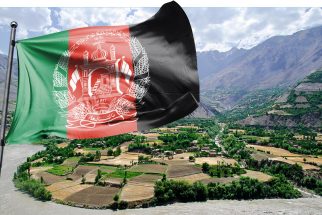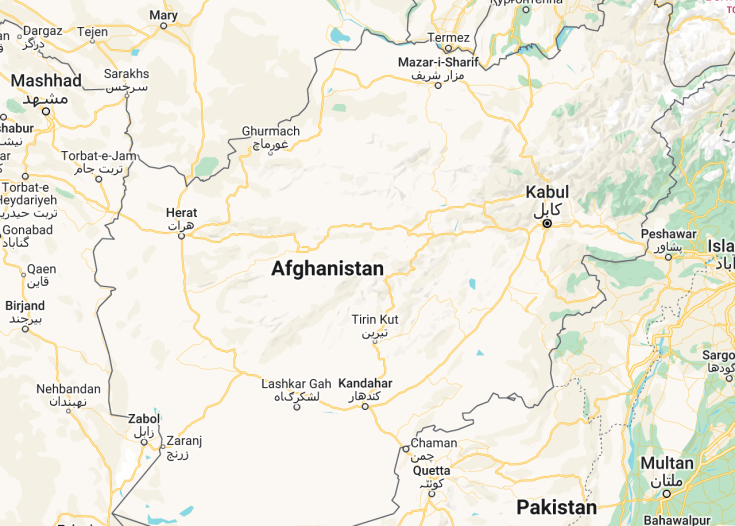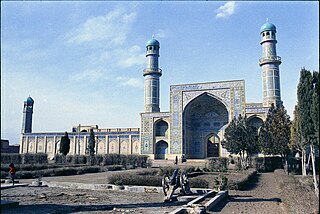Afghanistan, known as the “land of the Afghans,” is a captivating travel destination that offers a unique blend of history, culture, and natural beauty. From the rugged landscapes of the Hindu Kush Mountains to the bustling streets of Kabul, there is something for every traveler to discover in this enchanting country. Explore ancient archaeological sites, immerse yourself in the rich traditions of Afghan hospitality, and embark on breathtaking hikes through stunning mountain ranges. Despite its challenges, Afghanistan remains a land of opportunity for intrepid globetrotters seeking an off-the-beaten-path adventure.
Afghanistan’s diverse landscapes, from soaring mountain peaks to vast deserts, provide endless opportunities for outdoor enthusiasts and nature lovers.
For an authentic Afghan experience, consider staying with a local family. It’s a great way to immerse yourself in the culture and build meaningful connections.
Afghanistan: A Land of Ancient Beauty and Rich History
| Capital | Kabul |
| Time in Afghanistan | GMT+4:30 |
| Language spoken | Pashto and Dari |
| Population | 39 million (World Bank, 2019) |
| Religion | Islam (99%) Hinduism (1%) |
| Currency | Afghan afghani (؋, AFN) |
| Airports | Kabul International Airport (11.2 mi, 18 km) Kandahar International Airport (7.5 mi, 12 km) Herat International Airport (7.5 mi, 12 km) |
Strategically nestled at the crossroads of Central and South Asia, Afghanistan beckons with millennia of history. Majestic mountains like the Hindu Kush cradle ancient Silk Road routes, while historic cities like Herat and Balkh whisper tales of emperors and poets. The bustling streets of Kabul highlight a resilient spirit, where age-old bazaars brim alongside modern establishments. Rich in archaeological sites, Afghanistan is a tapestry of civilizations, from the Mauryans to the Mongols. Despite its tumultuous recent past, the indomitable spirit of its people and the haunting beauty of its landscapes make it a captivating destination for the intrepid traveler.
Where is Afghanistan located?
Afghanistan is located in Central Asia, bordered by six countries: Iran to the west, Pakistan to the east and south, Turkmenistan, Uzbekistan, and Tajikistan to the north, and China to the northeast.
What is Afghanistan famous for?
Afghanistan is famous for its historical significance and rich cultural heritage. It is known for being a strategic location along the ancient Silk Road, which facilitated trade and cultural exchange between East and West. The country is home to numerous historical sites, including the famous Bamiyan Buddhas, the ancient city of Balkh, and the stunning Minaret of Jam.
History
Ancient Period – 500 AD
Afghanistan, the crossroads of civilizations, has a history that can be traced back to the Neolithic age. Ancient empires such as the Medes, Persians, and Mauryans have all had their stake in this land. The region became a nexus for trade and cultural exchange, especially through the famed Silk Road.
500 AD – 1200 AD
During this period, the region witnessed the spread of Islam. Ghaznavids and Ghorids were dominant Muslim empires, with the latter laying the foundation for what would become the Delhi Sultanate in India.
1200 AD – 1500 AD
The Mongol invasions under Genghis Khan in the early 13th century decimated many cities. However, his descendants, particularly Tamerlane and the Timurids, contributed greatly to the region’s culture, fostering the arts, literature, and architecture.
1500 AD – 1900 AD
The modern Afghan state began to take shape in the mid-18th century when the Hotak dynasty was founded. It was later replaced by the Durrani Empire, under which the Pashtun national identity blossomed. Throughout the 19th century, Afghanistan found itself between the expanding British and Russian empires, leading to the Great Game—a political and diplomatic confrontation.
1900 AD – 2001
Afghanistan gained full independence from the British in 1919. The latter half of the 20th century saw coups, invasions, and civil wars, including the Soviet invasion in 1979 and the rise of the Taliban in the late 1990s.
2001 – Present Day
The early 21st century began with the US-led invasion after the 9/11 attacks, with the aim of ousting the Taliban. Despite initial successes, the insurgent group regained significant power in subsequent years. Recent times have been marked by diplomatic efforts, international peace talks, and the eventual withdrawal of US troops in 2021. Post-withdrawal, the Taliban rapidly seized control of most of the country, including the capital, Kabul, plunging Afghanistan into a period of uncertainty with concerns about human rights, especially women’s rights, governance, and international relations.
Visit Afghanistan
What to see and do in Afghanistan
A trip to Afghanistan offers a unique and enriching experience for travelers. Here are some of the top attractions and activities in Afghanistan:
- Explore the ancient city of Herat, known for its stunning Islamic architecture and colorful bazaars.
- Visit the Buddhas of Bamiyan, impressive colossal statues carved into the cliffs during the Buddhist period.
- Trek through the awe-inspiring landscapes of the Wakhan Corridor, nestled between the Hindu Kush and Pamir Mountains.
- Discover the historic city of Balkh, one of the oldest cities in the world and a UNESCO World Heritage Site.
- Experience the vibrant atmosphere of Kabul, the capital city, with its bustling markets, museums, and cultural sites.
- Take a journey along the Silk Road and explore the ancient trading routes that once connected East and West.
These are just a few highlights of what Afghanistan has to offer. The country’s rich history, stunning landscapes, and warm hospitality make it a destination worth exploring.
Events in Afghanistan
Afghanistan hosts various cultural, religious, and sporting events throughout the year. Here are some notable events:
- Nowruz (March 21st): Celebrating the Persian New Year, Nowruz is a significant cultural event in Afghanistan, marked by festive traditions and gatherings.
- Eid al-Fitr and Eid al-Adha: These Islamic holidays are celebrated with prayers, feasts, and social gatherings, bringing communities together.
- Buzkashi: Also known as “goat grabbing,” Buzkashi is a traditional Afghan sport involving horse-mounted players trying to secure a goat carcass.
- Independence Day (August 19th): Commemorating Afghanistan’s independence from British control, this national holiday is marked by parades and patriotic festivities.
It’s important to note that events and celebrations may vary each year and are subject to change due to the country’s security situation. Travelers are advised to check with local authorities and tourism agencies for the most up-to-date information.
Best time to visit Afghanistan
The best time to visit Afghanistan is during the spring (March to May) and autumn (September to November) seasons. These periods offer milder temperatures, making it more comfortable for outdoor activities and exploring historical sites.
Spring brings blooming flowers and lush landscapes, while autumn showcases vibrant colors as the trees change their leaves.
Summers (June to August) can be hot in Afghanistan, especially in the lowland areas. Winter (December to February) can be cold, especially in the mountainous regions, with possibilities of snowfall.
It’s important to consider the safety and security situation in Afghanistan before planning a trip. Travel advisories and guidance from local authorities should be carefully considered.
Is Afghanistan worth visiting?
Afghanistan, with its rich history and diverse cultural heritage, offers a unique travel experience. However, it’s essential to acknowledge the security challenges the country faces. Travelers who are interested in exploring Afghanistan should carefully assess the risks and consider the current situation.
Afghanistan’s historical sites, such as the ancient city of Herat and the Buddhas of Bamiyan, showcase the country’s rich past and architectural wonders. The stunning landscapes, including the Wakhan Corridor and the Hindu Kush mountains, offer opportunities for adventurous treks and outdoor activities.
Visiting Afghanistan requires thorough planning, including consulting with local authorities, travel agencies, and obtaining the necessary permits and documentation. Travelers are advised to stay informed about the latest security updates and follow recommended safety precautions.
In conclusion, Afghanistan’s cultural and natural treasures make it an appealing destination for adventurous travelers. However, the decision to visit should be made after careful consideration and with an understanding of the current security situation.
Common questions
When was the Buddhas of Bamiyan destroyed?
What is the significance of the Khyber Pass?
What are the main highlights of Herat City?
What is the best time to visit Band-e Amir National Park?
What are the popular trekking routes in the Hindu Kush mountain range?
What is the currency used in Afghanistan?
What are the popular traditional dishes in Afghanistan?
- Kabuli Pulao: A flavorful rice dish with tender lamb, carrots, and raisins.
- Mantoo: Steamed dumplings filled with spiced ground meat, often served with yogurt and tomato-based sauce.
- Ashak: Dumplings filled with leeks and served with a tomato and garlic sauce.
- Kofta Challow: Grilled meatballs served with saffron rice.
- Qabili Palaw: A hearty dish made of long-grain rice, meat (often lamb), carrots, and raisins.
These are just a few examples of the rich and flavorful Afghan cuisine that you can explore during your visit.
What are the safety considerations for travelers in Afghanistan?
Are there any visa requirements for visiting Afghanistan?
What are the famous historical sites in Afghanistan?
- The Minaret of Jam: A UNESCO World Heritage Site, known for its intricate architectural design and historical significance.
- The Citadel of Herat: An ancient fortress that showcases various architectural styles and offers panoramic views of Herat City.
- The Bala Hissar Fortress: A historical fortified complex located in Kabul.
- The Gardens of Babur: A beautiful garden complex built by Emperor Babur in Kabul.
- The Shahr-e-Zahak (Red City): The remnants of an ancient city near Bamiyan, which was once an important Buddhist center.
These are just a few examples of the many captivating historical sites waiting to be explored in Afghanistan.
Can tourists visit the Wakhan Corridor?
What are the cultural norms and etiquette in Afghanistan?
- Dress modestly, especially in religious sites and conservative areas.
- Show respect for Islamic traditions and customs.
- Seek permission before taking photographs of individuals, especially women.
- Avoid public displays of affection.
- Use the right hand for greetings, eating, and giving and receiving items.
- Refrain from discussing sensitive political or religious topics unless initiated by locals.
By being mindful and respectful of the local culture, you can have a more immersive and rewarding experience during your visit to Afghanistan.













